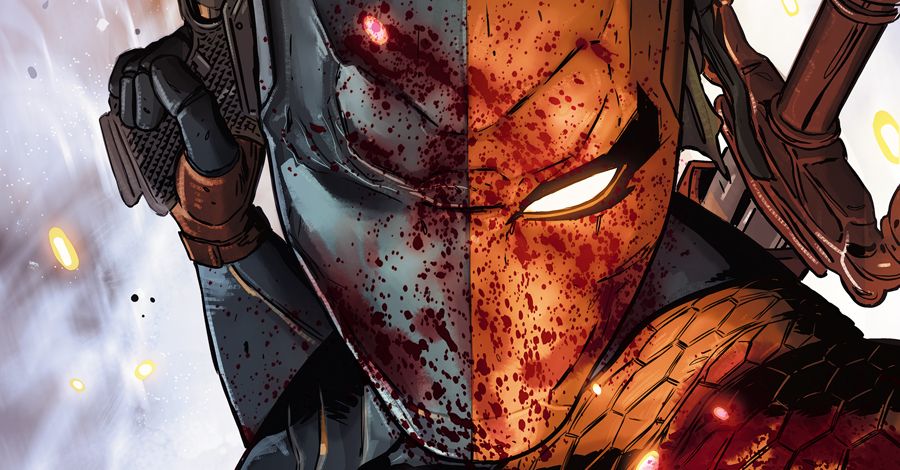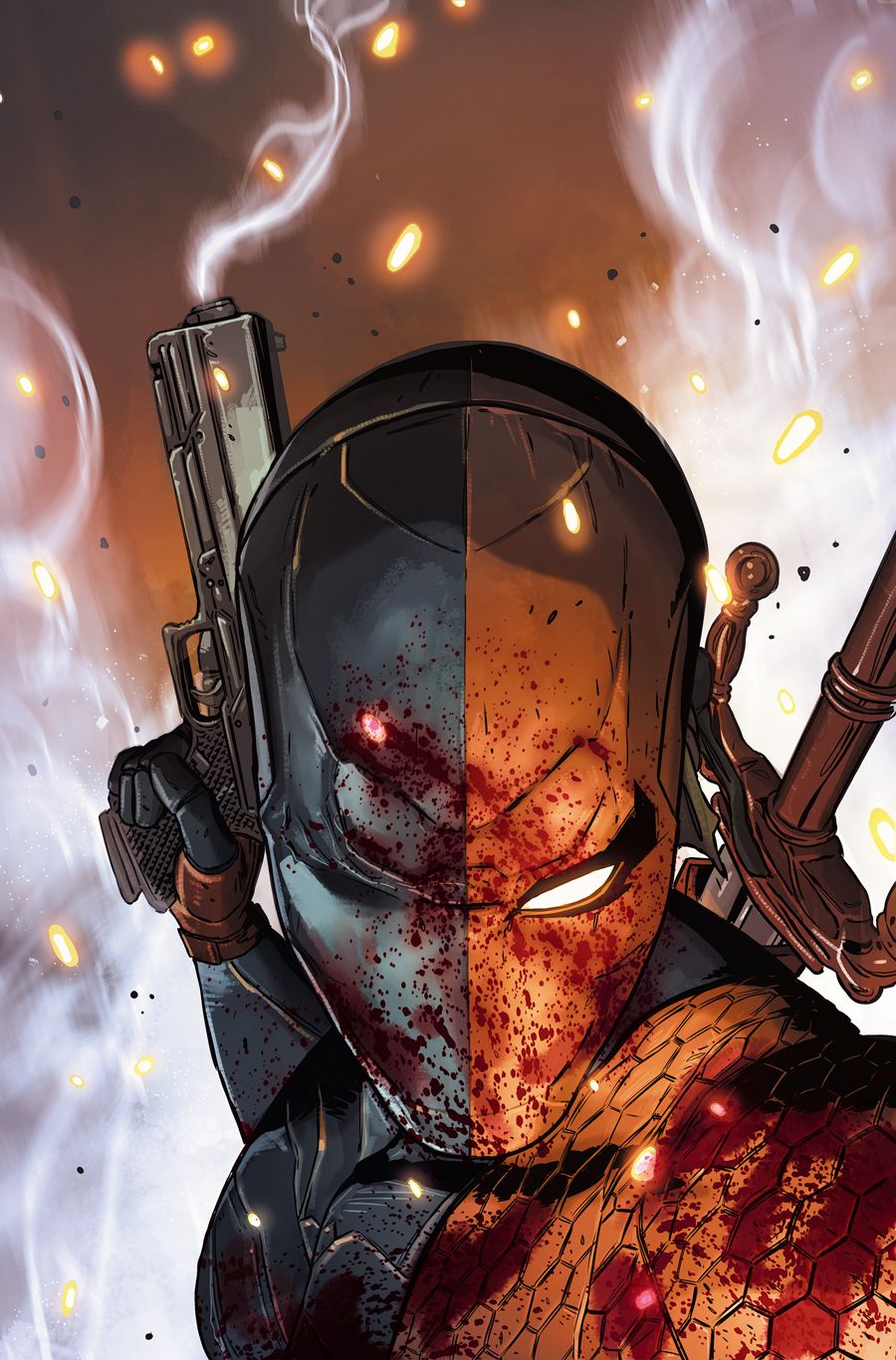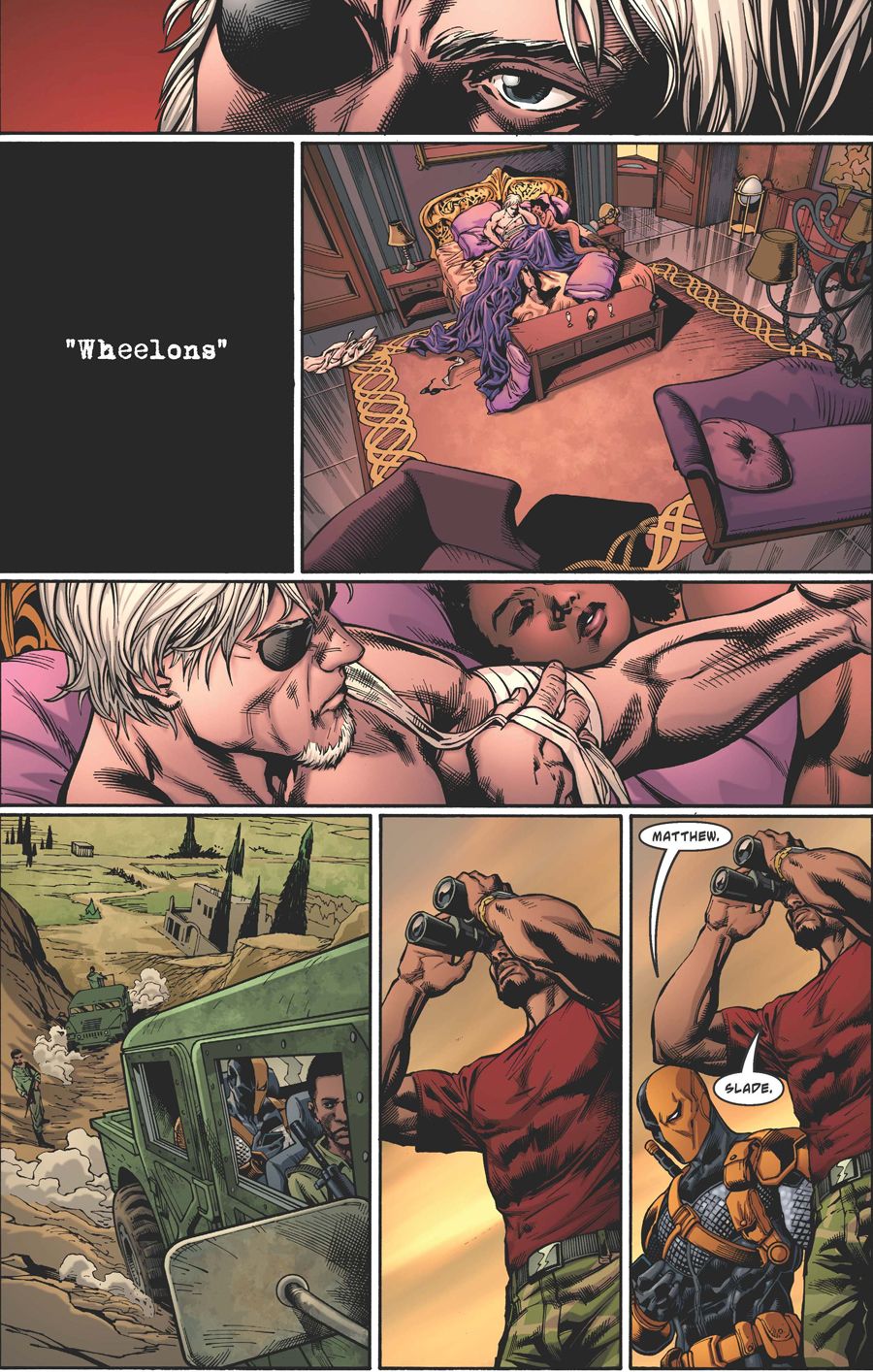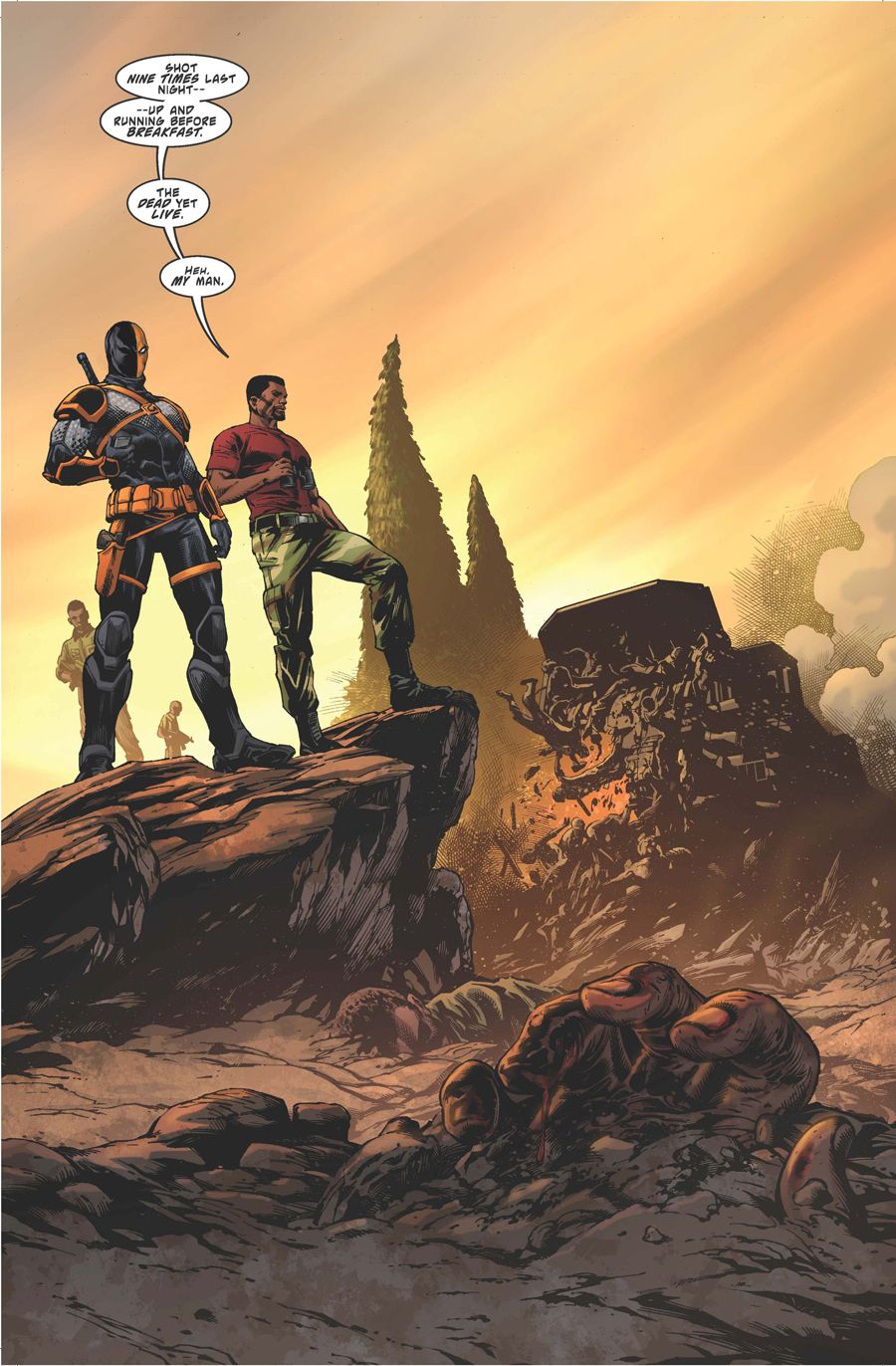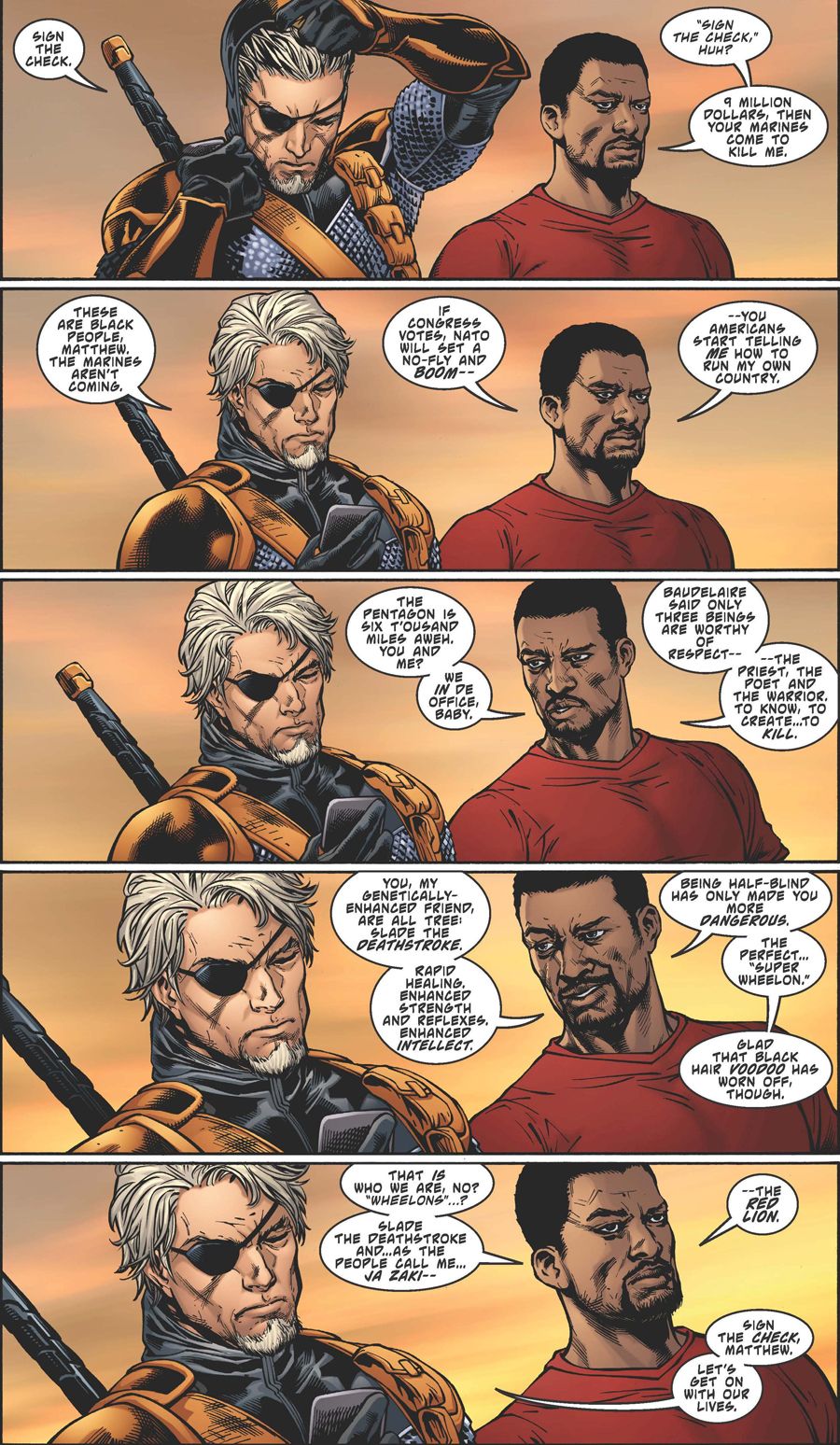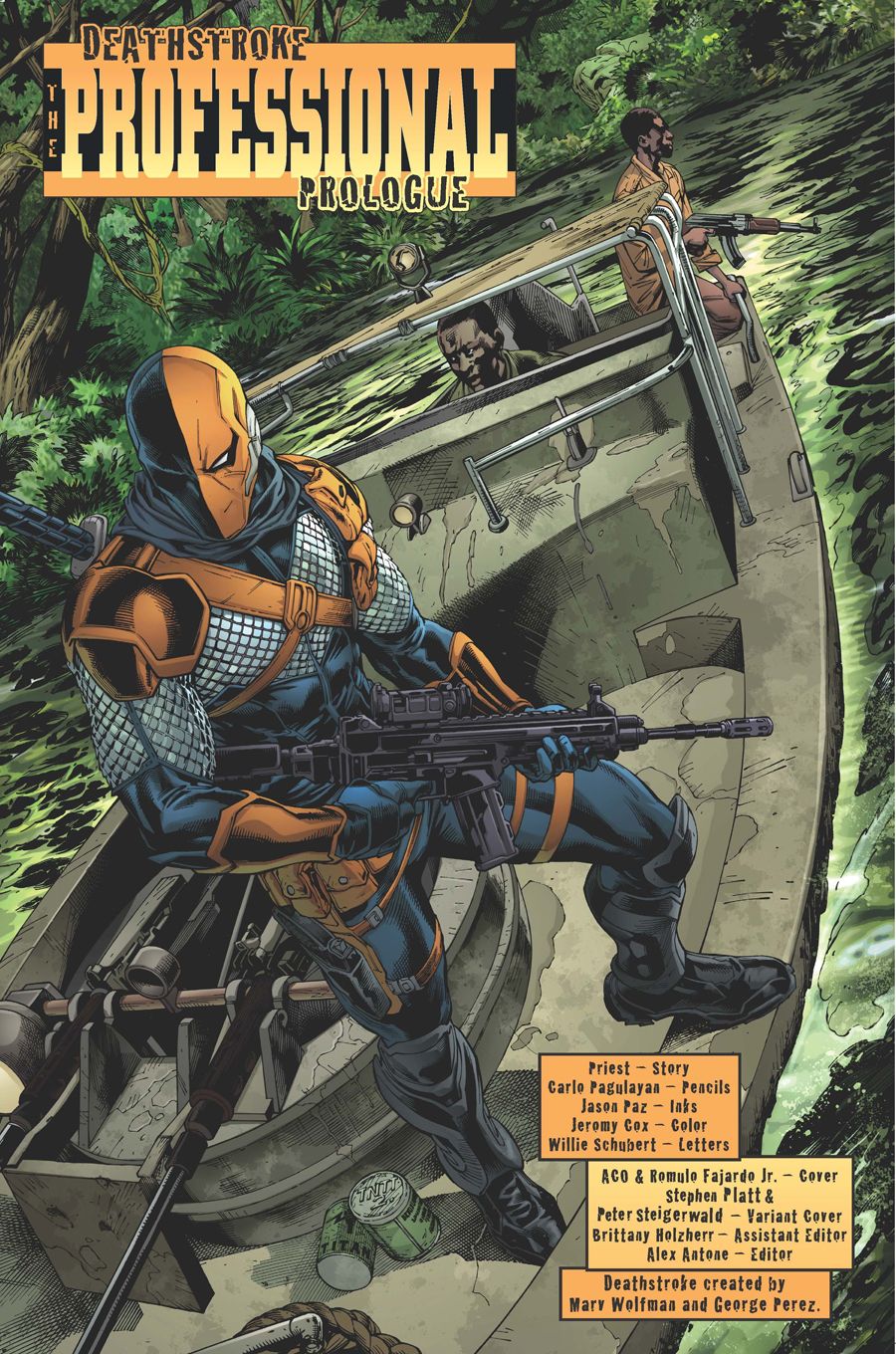In the 1990s, writer Christopher Priest was a beloved and acclaimed figure in the comics industry. Priest, who started his writing career in the '80s under the name Jim Owsley, has the dubious distinction of being one of only a few veteran Black writers in American mainstream superhero comics. His work on "Steel" with artist Denys Cowan at DC Comics forged a strong identity for John Irons apart from Superman; "Quantum and Woody," his cult hit Valiant collaboration with M.D. Bright, smartly balanced sharp humor and superheroics; and his five-year run on "Black Panther" helped define the vastly influential Marvel Knights line and re-establish T'Challa as a lead character.
RELATED: DC Artist Aco Shares Character Designs for "Deathstroke" Rebirth
Yet after his Marvel series "Captain America & The Falcon" wrapped in 2005, Priest has been conspicuously absent from the comics industry. He's resurfaced here and there -- he wrote the "Q2: The Return of Quantum and Woody" miniseries for the current incarnation of Valiant Entertainment, and a short story in 2014's "Deadpool" #27 -- but has focused mainly on writing outside of comics. Part of the reason, Priest explains, is an industry perception of him as a "Black writer" of Black characters, which he felt limited his opportunities.
So longtime fans were pleasantly surprised when DC announced Priest as the writer of the new, twice-monthly "Deathstroke" series, launching as part of the publisher's Rebirth initiative, intended to bring DC Comics' heroes and villains back to their core concepts. The "Deathstroke: Rebirth" one-shot, out August 10 and illustrated by Carlo Pagulayan, will be immediately familiar to Priest fans thanks to its white-text-on-black-background title cards indicating scene changes. Yet before this assignment, Priest wasn't too familiar with Deathstroke -- as he told CBR, he knew the DC Universe's infamous assassin from his "Teen Titans" history, but had never given any thought to him as a solo character.
With the release of "Deathstroke: Rebirth" just days away and a new "Deathstroke" #1 following two weeks later, Priest spoke with CBR about why he was excited about the opportunity the series presented -- namely, moving on from being pigeonholed as a "Black writer" -- and his interest in writing a story with a villain as protagonist, as he pits the title character against his own past, in a quest for possible redemption.
CBR News: Priest, this is an obvious place to start, but as a longtime fan of your work, I'm personally curious -- we haven't seen much comics work from you in the past 11 years. What was it about this opportunity, writing "Deathstroke" in particular, that lured you back into the game?
Christopher Priest: He wasn't Black. [Laughs] That's pretty much it.
Every 18 months or so, I would get a call from Marvel or DC or some independent publisher, and they'd go, "Hey, we've got this great book coming up and we want you to write it." Invariably, it would be a character of color -- usually an African-American character. There were a lot of reasons why I just kind of dropped out of comics eight or nine years ago, but part of the reason was, I started in this business as a writer. Writing Spider-Man, "Power Man and Iron Fist" [at Marvel]. At DC, I was doing "The Ray," "Action Comics," "Green Lantern: Emerald Dawn," things like that. Somehow, over time, I stopped being a writer and became a "Black writer." I'm not really sure exactly how that happened. It's not that I was unwilling to work in the industry or that I quit or retired or anything like that. It's just, this is what I was being offered -- I was being offered exclusively Black characters.
I kind of let it be known, politely, I'd love to be working in the business again, that would be great, but I want to be taken seriously as a writer, not just as a "Black writer." We'd have these discussions about every 18 months. A company would pitch me an idea, and I'd go, "Well, I'm not really interested in that. How about Martian Manhunter? I've got this great Martian Manhunter idea." Then they'd go, "Well, we've already got somebody working on Martian Manhunter." We'd go back and forth, and then we'd go, "Well, thanks for the call, I'll see you in 18 months." That's kind of what's been going on.
Marie Javins, the group editor, called and said "Deathstroke" to me, and it stopped me in the tracks for a minute. It took me a minute to remember who he was. [Laughs] And then I asked: "He's that guy from 'Teen Titans,' the guy with the sword, right?" "Yeah, that's him." "OK, alright. Is he Black?" She said no. I said, "OK, keep talking." Frankly, the idea intrigued me to write a villain. I really hadn't written a villain as the major protagonist of a series before. I thought this could be an interesting challenge for me. I gave it some thought, and I called her back: "If I can write it this way -- in a character-driven, introspective way, and get inside the character and examine him kind of the way we did 'Black Panther' -- that would be a really interesting challenge. If it's just going to be him running around killing people, that's a little less appealing."
We talked about concept, and then she brought in the editor, Alex Antone, and we all worked out a direction. Then [DC Entertainment President & Chief Creative Officer] Geoff Johns came in, and he's kind of the grand papa of it all. We came up with a concept that worked for everybody.
Deathstoke is a character that's been around for decades, but it sounds like he's not one you had given much thought to as a writer.
No. Never! I knew who he was. Albert, I didn't even know the guy had his own book! Apparently he's had his own book for a long time. Since I wasn't actively working in the comics field, I wasn't reading comics. When Marie said, "We're doing this Rebirth event that's going to transition us out of The New 52," I said, "Well, what's The New 52?" She had to go back and explain all that to me. I really haven't read comics in a long time.
I really liked "Teen Titans" when Marv Wolfman and George Perez were doing it. That whole "Judas Contract" thing that launched Deathstroke was fabulous and, I thought, very gutsy -- I don't know how they got some of that stuff in print. Marv Wolfman was one of my first mentors, and I really loved his writing, and George Perez was just a great guy back at Marvel -- and then we lost him to DC, obviously. So, no. Hadn't really thought about writing the character myself at all. I never considered it.
Well, now you're diving into the deep end by not only writing the character, but twice a month. That's a different type of pace -- what's it been like getting into the world of Deathstroke in this rapid-fire way?
Actually, it's been a little easier than you might suspect. Alex and I worked up a plotline, and I started writing one-paragraph pitches for issue #1, issue #2, issue #3. I think we did eight or nine issues of, "This is what the story is going to be about." Then we submitted all of that stuff to Geoff, and Geoff came in and said, "This is great, but this is not what we should lead with. We should lead with X, Y, Z." He wasn't feeding us specific plots, but goals, in terms of story. The stuff that we had come up with, we kind of shelved, started again, developed this other [story] in consultation with Geoff. Once we had the new front end up and running, we still had seven or eight issues of story that we had developed previously. So we adapted that stuff into the new front end, and frankly, it's been pretty simple. We basically had eight or nine issues of "Deathstroke" already plotted, and now it's just a matter of executing it.
Turning the scripts in is a little bit of a challenge, but for me, the hard part is thinking up the story. Writing the script is all mechanical; it's just me doing the typing and coming up with witticisms for [frequent Deathstroke associate] Wintergreen to say to Deathstroke. Alex and I had already plotted out several issues, and then Geoff plotted out several issues with us. We had a real good head start.
You've been out of comics for a while, and it's been not an insignificant time since you were doing an ongoing series. What's it like getting back into that rhythm?
A little strange, but it's kind of like riding a bike. It does come back to you. The first script that Alex and I worked on took an enormous amount of time, in my opinion, mainly because of getting used to that formatting, and books are 20 pages instead of 22 pages. And the fact that, in the interim time, I've been writing a lot of novels. I've been self-publishing novels on Amazon, so I've been doing this longform prose writing, which is much more detailed and takes longer to do, but has been incredibly freeing, and I've enjoyed it a great deal. Now I'm in this format that only has 20 pages -- page 20 comes at you like a freight train. You're having a good time, and all of a sudden -- we have to stop now. "I'm sorry, our time is over." It's taken me a while to get into that rhythm, but it does come back to you pretty quickly.
Another big difference of doing a series twice-monthly is you're not working with just one artist. I have fond memories of your partnerships with artists like Denys Cowan and Mark Bright, and on "Deathstroke" you're working with Joe Bennett and Carlo Pagulayan -- what's it been like going back and forth with two artists on one series?
Part of it is just the genius of Alex Antone. I had not known Carlo's work before, but I could not have possibly asked for a better art team to jump-start this series -- just to really nail all the characterization. My God, this guy does a tremendous job with both Slade and Deathstoke. He's drawing the adventures in two different time periods, so he's jumping back and forth between the present day and 10 years ago. He's handling this brilliantly. Present-day Slade more or less looks like Tom Cruise in "The Last Samurai," only with white hair; then you go back to the flashbacks 10 years ago, and he looks like Steve Rogers -- which is perfect, thematically, in terms of the character's journey. I've just really been happy with him.
Alex has divvied up the art duties along thematic lines. Carlo is handling mostly parts of Deathstroke's life where he's dealing with Wintergreen; he's dealing with, eventually, his son; he's dealing with flashbacks. Joe Bennett -- my old pal from "Captain America and The Falcon" and "The Crew" -- we just enjoy the heck out of working with each other. I'm so grateful to have him on the book. His style is completely different from Carlo's, but he's also telling a different part of Deathstroke's story, where Deathstroke is dealing with his teenage daughter, Rose. It works really well. Even though it's a rapid departure in art styles, thematically, soon as you see Joe, you know this block of stories here is dealing with this area of Deathstoke's life, and Carlo is dealing with this other area of Deathstroke's life. It's kind of like changing color palettes in the narrative of the story. It just works out really well.
For someone who is both a veteran of the business yet one that's been out of it for a while, what's it been like stepping back into it? You were at Comic-Con a couple weeks ago for the first time in a while, and you're back at DC during the high-profile Rebirth initiative. What observations have you made, as someone with a distinctly unique perspective?
It's a lot like being Rip Van Winkle. I had assumed printed comic books were on the ropes, and you guys were going all digital. I really hadn't realized that both Marvel and DC are still selling quite a bit of printed, traditional comic books. As far as the continuity and so forth, I have some friends who are acting as researchers for me, who send me summaries and answer my questions, because I have absolutely no idea what's going on. [Laughs] None. There's a lot of catch-up -- I have to go back to school and learn who The Flash is now, because God knows I've lost track of who The Flash is.
Comic-Con was completely overwhelming. I hadn't been there since 1992.
Some pretty big changes in that time!
Yeah. I really wasn't prepared for that. I also really was not prepared for the fact that, much like "Star Trek," which was canceled in 1969, somehow my work has become more popular in reruns. The last time I worked in the business steadily, no one knew or cared much about me. With "Black Panther," "Steel," "The Ray," "Justice League Task Force," we were fighting for our lives with every issue. To go to San Diego and see the line wrapped around the corner at the booth, waiting to get an autograph, I was like, "Don't you people have something better to do? What are you doing here!" I had very young people come up to me and they're going, "Wow, you're my favorite writer!" "You weren't born yet when I was doing stuff!" [Laughs] It's been a little overwhelming, and I'm still trying to figure out what to make of it.
"Deathstroke: Rebirth" is scheduled for release on Aug. 10 from DC Comics, followed by "Deathstroke" #1 on Aug. 24.

